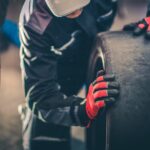 Convertible Car Repair
Convertible Car Repair
As a seasoned automotive enthusiast, I’ve always had a soft spot for convertible cars. There’s just something about cruising down the open road with the wind in your hair that brings a sense of freedom and exhilaration. However, as any convertible owner knows, these unique vehicles come with their own set of maintenance and repair challenges. In this article, I’ll be delving into the world of convertible car repair, sharing my expertise and insights on how to keep your beloved convertible in top-notch condition.
When it comes to convertible car repair, one of the most common issues that owners face is with the convertible top itself. Whether it’s a tear, a malfunctioning motor, or a leak, dealing with a faulty convertible top can be a real headache. In this article, I’ll be providing you with practical tips and step-by-step instructions on how to diagnose and fix common convertible top problems. From identifying the source of a leak to replacing a torn fabric, you’ll find all the information you need to tackle these repairs with confidence.
Owning a convertible car is undoubtedly a thrilling experience, but it also requires regular maintenance to ensure its longevity. From the mechanics under the hood to the cosmetic aspects of the vehicle, there are several areas that may require attention over time.

Common Issues with Convertible Cars
One of the most common issues that convertible car owners may encounter is a malfunctioning roof mechanism. This can be frustrating, especially when you’re ready to enjoy a sunny day with the top down. There are a few potential causes for roof mechanism malfunctions, such as:
- Motor Failure: The motor that operates the roof mechanism may fail over time due to wear and tear. This can result in the roof getting stuck halfway or not moving at all.
- Hydraulic System Issues: Convertible roofs often use a hydraulic system to operate. If there is a leak in the hydraulic system or a problem with the hydraulic fluid, it can cause the roof to malfunction.
- Electrical Problems: Some convertible roofs rely on electrical components to function properly. If there is an issue with the electrical system, such as a blown fuse or a faulty switch, it can affect the operation of the roof mechanism.
To diagnose and fix a roof mechanism malfunction, it is recommended to consult the car’s owner manual or seek assistance from a professional mechanic. They have the knowledge and experience to identify the specific cause of the issue and provide the necessary repairs to get your convertible back on the road with a fully functioning roof.
Leaking Roof
Another common issue with convertible cars is a leaking roof. This can be a major concern, as water entering the cabin can cause damage to the interior and lead to mold and mildew growth. Here are a few possible reasons why your convertible roof may be leaking:
- Worn-out Seals: Over time, the seals around the roof may deteriorate, allowing water to seep through. This can happen due to exposure to harsh weather conditions, such as extreme heat or cold.
- Torn or Damaged Roof Material: If the fabric or vinyl material of your convertible roof is torn or damaged, it can create openings for water to enter the cabin.
- Clogged Drain Tubes: Convertible roofs usually have drain tubes that help divert water away from the cabin. If these tubes become clogged with debris, water can accumulate and eventually leak into the interior.
To address a leaking roof, it is crucial to identify the precise source of the leak. This may involve inspecting the seals, checking for tears or damage in the roof material, and ensuring that the drain tubes are clear. Once the source of the leak is determined, appropriate repairs can be made to prevent further water intrusion.
Window Seal Problems
Window seal problems are another issue that convertible car owners may encounter. The window seals play a vital role in keeping the cabin protected from external elements, such as wind and rain. If you notice any of the following signs, it may indicate a problem with the window seals:
- Whistling Noise: A whistling noise while driving at high speeds can indicate that the window seals are not properly sealing the windows.
- Water Leaks: Water entering the cabin, especially during rainfall, can be a sign of faulty window seals.
- Drafts or Air Leaks: If you feel drafts or air coming into the cabin, it may suggest that the window seals are worn out or damaged.
To address window seal problems, it is essential to inspect the seals for any signs of wear, tears, or damage. If necessary, the seals may need to be replaced to ensure proper sealing of the windows.

 Convertible Car Repair
Convertible Car Repair





































